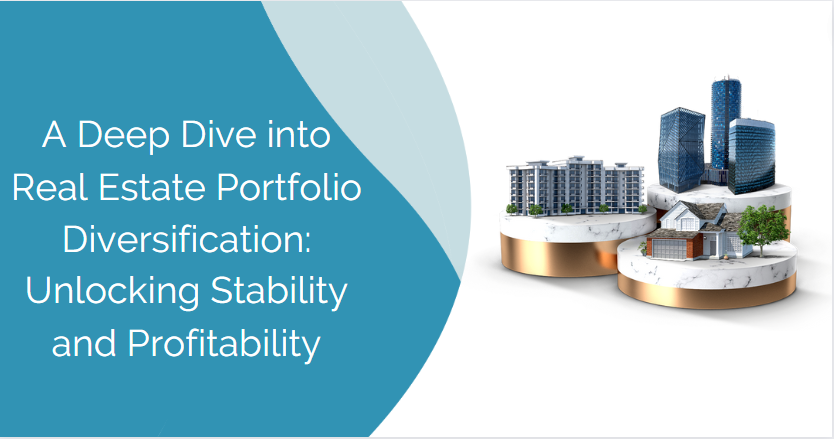Determining optimal hold periods for commercial properties requires balancing multiple considerations. While individual inclinations may be to sell quickly or hold forever, economic cycles, personal goals, and asset specifics warrant a customized strategy.
Align with Investment Objectives
Revisit your real estate investing goals. Seeking stable cash flow? Long-term holds support that. Want to actively trade assets? Shorter durations allow flexibility. Need to build reserves for expansion? Medium holds accumulated funds.
Evaluate Property Type
Hold periods vary by asset class. Multifamily rentals warrant longer holds to realize income over time. However, hotels and specialized properties may require shorter durations to exit during market peaks. Speculative projects may lend themselves to immediate flips once stabilized.
Assess Market Cycles
Economic shifts impact hold strategies. During hot markets with rising property values, extended holds take advantage. Approaching downturns may incentivize earlier exits to capture gains. Use market research to identify coming pivot points.
Factor Capital Plans
Property improvements and leasing costs influence hold outlooks. Assessing future capex needs helps determine realistic durations. Plans to add or renovate units also support longer holds to see expansion or improvement through.
Run the Numbers
Tax implications, cash flow projections, capitalization rate trends - crunch the data from all angles. The math should validate intuitive hold assessments. Just don't let it override market realities.
Rather than generic rules of thumb, develop hold strategies tailored to each asset and adaptable to evolving conditions. Revisit regularly to keep your portfolio aligned with commercial real estate cycles and your objectives.
What Should You Know Before Investing in Industrial Real Estate?
Modern Distribution Space Is What’s In Demand:
Modern, quality distribution space is in high demand in the industrial property sector.
The distribution and fulfillment space has experienced the fastest rent growth.
General distribution space is a relatively safe bet for first-time industrial investors.
An Industrial Asset’s Location Is Paramount:
The location of an industrial property is crucial for its success.
Proximity and easy access to major transportation corridors are important.
Industrial research labs and specialized buildings have high demand but may be more expensive to invest in.
Which Interior Features of Industrial Buildings Are the Most Important?:
Clear heights are essential for distribution centers.
Clear heights determine the amount of inventory that can be stored.
Loading docks are critical for loading and unloading products.
The configuration and setup of loading docks are important.
Column spacing affects the efficiency of operations in distribution and logistics buildings.
Most Important Exterior Considerations for Industrial Investing:
Truck courts are crucial for distribution operations.
Proximity to major transportation corridors benefits operations and tenant demand.
Truck Courts and their Importance:
Truck Courts are the area adjacent to a building's loading docks that consists of the loading and truck maneuvering areas.
Truck courts play a crucial role in logistics distribution properties as they can impact the efficiency and safety of operations.
The standard depth of a truck court is around 120 feet, but newer properties often have larger truck courts.
Trailer Parking in Logistics Centers:
Trailer parking is an important consideration for major logistics centers to accommodate heavy traffic.
Investments in assets with secured truck courts or trailer parking can be beneficial.
Repositioning Opportunities for Industrial Investments:
Repositioning a dated industrial facility can yield high returns and be a valuable investment strategy.
Buying a Class B asset at a lower price point and improving it can lead to significant returns.
Key Considerations when Investing in Industrial Real Estate:
Location, access to transportation, and proximity to major terminals and transportation hubs are important factors to consider.
Setting realistic assumptions expectations is crucial for success in industrial real estate investments.
Advantages of Investing in Industrial Real Estate:
Investing in industrial real estate can offer strong returns and repositioning opportunities.
Tax benefits, such as accelerated depreciation, can further enhance the advantages.
Risks Associated with Investing in Industrial Real Estate:
Tenant default, longer lease terms, and slower leasing velocity are common risks.
Value-add opportunities may be necessary to maximize returns on industrial real estate investments.
Capitalizing on Capital-Deprived Opportunities in Commercial Real Estate
Commercial real estate (CRE) offers a wide range of opportunities for investment and value generation, including what are typically called 'capital-deprived opportunities.' These opportunities refer to underfunded projects, distressed properties, or inadequately managed assets due to a lack of sufficient capital. While presenting a unique set of challenges, they can be a path for substantial returns for the discerning investor who understands their potential.
First, let’s review what exactly is a capital-deprived opportunity. These are typically properties or projects that are underfunded, distressed, or inadequately managed due to insufficient capital resources. They present an opportunity because they are typically priced below their potential market value, and with the right infusion of capital and management, can generate significant returns.
Identifying and capitalizing on these opportunities requires a strong understanding of market dynamics, a keen eye for details, and a network of industry contacts. Real estate professionals should monitor markets with economic stress or high levels of distressed assets, track public records for properties with delayed payments or foreclosure proceedings, and establish relationships with brokers and other industry professionals who can provide leads.
Once a potential opportunity has been identified, thorough due diligence is critical. This involves evaluating the property's financial status, market value, and costs associated with improving the property to its stabilized market potential. Knowledge in real estate valuation, underwriting skills and market knowledge (interest rates, cap rates, market rents, etc) are required to competently identify the financial potential fo the opportunity.
The evaluation should also take into account the potential risks, such as market volatility, the time required for property improvement, and any regulatory or zoning issues that could impact the project. Understanding these risks will help investors make informed decisions and develop their business plan.
After identification and evaluation, the next step is to secure financing. For these types of projects, traditional bank financing may not always be available or suitable. Instead, investors might consider options like bridge debt, private or hard money loans, or real estate crowdfunding platforms. These sources offer flexible terms and are often more receptive to funding capital-deprived opportunities.
The final stage is implementing a business plan for managing the property or project. This typically involves hands-on asset and property management, improving operational efficiencies, marketing repositions and/or executing a renovation or redevelopment plan.
Investing in capital-deprived opportunities in CRE can be a profitable venture for those who are prepared but due to higher level of risk and required knowledge, due diligence, network and financing sources, these opportunities are best suited to experienced investors. But for those who can navigate these complexities, the rewards can be significant.
A Deep Dive into Real Estate Portfolio Diversification: Unlocking Stability and Profitability
One of the keys to maintaining success in the world of commercial real estate (CRE) investment lies in a term familiar to most but truly mastered by few - portfolio diversification. Through strategic diversification, we can unlock greater stability and profitability in our investments. Let's dive deep into this powerful principle.
1. The Diversification Spectrum
Diversification in CRE isn't a one-size-fits-all strategy. It's a spectrum that includes a variety of asset types, geographical locations, and risk levels. Some investors may choose to spread their investments across multiple asset classes, including retail, office, industrial, and multifamily properties. Others may diversify across different markets and regions, capitalizing on varying economic and demographic trends. Don’t forget to assess the risk-return trade-off across your portfolio. Balancing high-risk, high-return investments with more stable, low-risk ones can provide a safety net in volatile markets.
2. Benefits of Diversification
Why is diversification crucial? The simple answer is that it helps you spread risk and take advantage of diverse opportunities. The performance of CRE properties can depend on local economies, industry trends, and a host of other factors. By diversifying your portfolio, you can mitigate the impact of any single adverse event and balance the ups and downs of different markets and asset classes.
3. Implementing Diversification in Your Portfolio
Implementing diversification begins with understanding your investment goals and risk tolerance. This will guide your selection of asset classes, markets, and risk levels that fit your portfolio. It's important to stay informed about the market and economic conditions and adjust your strategy as needed. Just remember: Diversification is a marathon, not a sprint. Take your time, and make informed decisions.
4. The Role of a Professional Syndicator
This is where a seasoned real estate syndicator comes in. With extensive market knowledge and experience, syndicators can help identify diversification opportunities and execute a balanced investment strategy. They can assist in sourcing properties, conducting due diligence, structuring deals, and managing assets, allowing you to enjoy the benefits of diversification without the complexities of direct property ownership.
5. The Power of Diversification
The power of diversification can't be overstated. It not only protects your portfolio from market fluctuations but also paves the way for more stable and potentially higher returns over the long term. It's the key to unlocking both stability and profitability in your CRE investments.
So, are you ready to diversify your portfolio and reap the benefits? Remember: diversity isn't just the spice of life; it's the fuel for a successful real estate portfolio.
Keep an eye on this space for more insights on commercial real estate investing. If you enjoyed this deep dive into diversification, make sure to share it with your network and subscribe to our blog.
Unlocking Success: How to Choose the Right Real Estate Investment Partner
The path to success in commercial real estate (CRE) investing often involves a critical and frequently overlooked decision: choosing the right investment partner. With countless tales of success and failure in the real estate arena, the significance of this choice cannot be overstated. A well-matched partner can pave the way to success, but a poorly chosen alliance can stymie even the most promising of ventures.
Let's dive into key factors to consider when selecting your real estate investment partner.
1. Alignment of Investment Goals
Firstly, ensure that both parties share similar investment goals. Do you aspire to a quick turnover, or are you in for the long haul? Is your focus on long-term cash flow and appreciation, or are you more interested in immediate financial returns? Discussing these fundamental questions upfront will help to prevent conflicts further down the line.
2. Complementary Skillsets
A fruitful partnership often involves a synergy of diverse skills. Are you more adept at analyzing the financials, while your potential partner excels at sourcing deals or managing properties? Understanding each other's strengths and how they complement each other is vital. In a successful partnership, the whole truly is greater than the sum of its parts.
3. Financial Stability
Ensure that your potential partner has a solid financial footing. There's an old saying, "Don't go into business with someone who has more problems than you." This wisdom rings especially true in CRE investing. Real estate investments can require substantial upfront capital and may have unpredictable expenses. A financially stable partner can weather the ebbs and flows of the market.
4. Trustworthiness and Integrity
In real estate investing, a partner's trustworthiness and integrity are invaluable. Verify references and delve into the track record of potential partners. A partner's reputation can significantly influence your venture's success and can impact the ease with which you can secure future investment opportunities.
5. Legal Considerations
Lastly, make sure to solidify all agreements in legally binding documents. Transparency and clarity in legal agreements can safeguard your partnership and ensure both parties are clear on their responsibilities and rights. Seeking legal advice can be a wise investment in the long run.
In conclusion, choosing the right real estate investment partner is not a decision to be taken lightly. It requires careful consideration and diligence. Remember, while a perfect partner may not exist, finding someone whose goals align with yours, who complements your skills, is financially stable, and maintains strong integrity will put you on a path to success in commercial real estate investing.
Remember: Together, you're not just investing in properties—you're investing in each other. And with the right partner, the sky's the limit.
Stay tuned for more insights into the world of commercial real estate investing.
Unlocking the Potential: The Benefits of Investing in Value-Add Real Estate Projects
In the thriving world of commercial real estate investment, one approach stands out for its unique potential to generate high returns: Value-add real estate projects. For the strategic investor, these projects provide an opportunity to transform an underperforming or underutilized property into a high-performing asset. Let's explore the rich benefits of investing in these transformative ventures.
The Art of Adding Value
Value-add projects involve acquiring properties that present room for improvement. The idea is to enhance these properties, whether it's through renovations, repurposing, improving management efficiency, or optimizing leasing strategies, to boost their income-generating potential and market value.
Unearthing Hidden Gems
The prospect of value-add projects often lies in their potential to unearth hidden gems in the real estate market. Properties that may appear less desirable at first glance can, with the right strategies and improvements, become high-yielding investments. This approach allows investors to buy properties at a lower cost and, through targeted improvements, sell or rent at a higher price, thereby securing attractive returns.
Inflation Hedge
Investing in value-add projects offers a tangible hedge against inflation. As costs rise, so does the value of improved real estate. In contrast to purely financial investments, physical enhancements to property often directly correlate with increased rental income and property value, providing an effective shield against inflation.
Control Over Investment
Value-add investments give the investor a higher degree of control over their return on investment. Unlike passive investments, where market forces predominantly dictate returns, the value-add investor actively influences the property's performance through strategic improvements, potentially leading to higher returns.
Portfolio Diversification
Investing in value-add projects adds a layer of diversification to your portfolio. These investments allow exposure to different property types and markets, reducing overall investment risk. Each project's unique requirements and challenges also provide a diversified experience, enhancing the investor's skill set.
Community Impact
Beyond the financial gains, value-add projects can also bring about a positive impact on the community. Revitalizing properties can lead to job creation, improved neighborhood aesthetics, and enhanced local economy – a rewarding aspect that extends beyond pure monetary returns.
Caveat Investor
While the potential for high returns is compelling, value-add real estate projects come with inherent risks, including construction, financing, and market risks. A successful value-add investor is one who can effectively assess, manage, and mitigate these risks.
Investing in value-add real estate projects represents a golden opportunity to unlock potential and transform underutilized assets into high-performing properties. It's a venture that calls for strategic thinking, a willingness to take on challenges, and an ability to see the hidden potential where others may not.
Join us as we delve deeper into the world of value-add real estate investing. Remember, in the realm of real estate investments, the key to success often lies not just in what you see, but in what you can create.
Unleashing the Power of Partnerships: The Role of Private Equity in Real Estate Investments
Navigating the vast landscape of real estate investments, you'll encounter established routes such as Real Estate Investment Trusts (REITs) and Private Equity (PE), both offering unique advantages. While REITs have garnered attention due to their liquidity and accessibility, private equity, a well-established player in the investment arena, brings its own set of compelling benefits to the table. This blog post will illuminate the significant role private equity plays in real estate, emphasizing the power of partnerships and the unique potential it holds for astute investors.
Unlike REITs, where investors own shares of publicly-traded companies holding real estate assets, private equity real estate investments involve direct ownership or interests in real estate properties or portfolios. This difference underlies the unique benefits of private equity investments.
Unleashing the Power of Partnerships
The core strength of private equity lies in its utilization of partnerships. Investors not only contribute capital but often bring strategic expertise to the table, facilitating robust collaboration that can drive higher returns. In the PE model, this partnership extends to relationship-building with local operators, brokers, and developers. This allows investors to have a more profound influence on their investments and often access off-market deals.
Value-Add and Opportunistic Strategies
Private equity, unlike public equity, can take on a more aggressive, value-add or opportunistic investment strategy. These strategies typically involve improving or redeveloping properties to boost their profitability, something that's challenging to execute in the publicly-traded realm due to its conservative stance and emphasis on stability.
Flexibility and Control
One of the defining features of private equity is the control it affords to investors. They have more freedom in choosing the specific projects or properties they invest in, compared to the more passive investment nature of REITs. Depending on the partnership agreement, this flexibility can also extend to exit strategies - investors can decide when to invest and when to exit, providing potential for superior returns during a market upswing.
Diversification
Though public equity provides access to various sectors, private equity opens up the entire real estate market, including sectors not typically represented in REITs, such as Class C or niche properties. This characteristic of PE can enhance portfolio diversification, reducing risk while potentially boosting returns.
Caveat Investor
While the potential benefits are enticing, private equity real estate investments are not without their risks and complexities. They require higher initial capital outlays, have less liquidity, and may demand a more hands-on approach. However, for the savvy and patient investor, these challenges can transform into opportunities for superior returns.
Making strategic investment choices is integral to achieving your financial goals in the world of commercial real estate. By carefully selecting among the major types of equity investments - such as private equity - based on your specific objectives, you can leverage these powerful investment tools to drive success and accomplish your portfolio goals.
Join us on this journey of learning and profit as we further explore private equity's role in real estate. Because the future of real estate investment is not just about property—it's about partnership.
Strategic Repositioning and Recapitalization: The Golden Keys to Unlocking Maximum Returns in Commercial Real Estate
In the ever-evolving landscape of commercial real estate (CRE), the quest to maximize returns on your investment demands a forward-thinking, adaptive strategy. Among the many investment considerations, two strategies stand out as vital cornerstones of successful CRE investing, strategic repositioning and recapitalization. In this post, we'll discuss how these powerful strategies can bolster your CRE portfolio, unlocking powerful growth and returns.
Repositioning in the CRE realm is analogous to breathing new life into a property. It involves fundamentally changing the property's character or function to enhance its market value and improve financial performance. This might include renovations, new tenant mix, upgrading amenities, or even a change of use.
For instance, consider an old warehouse in an area that has lately seen a surge of trendy restaurants and boutiques. Repositioning might involve converting this warehouse into a retail destination or a chic co-working space, aligning it with the neighborhood's shifting demographics.
Strategic repositioning demands an intimate understanding of the local market, emerging trends, and consumer preferences. With successful execution, it can catapult the property's appeal, generate increased revenue, and ultimately boost your returns.
Next, let's delve into recapitalization. This is a financial strategy that adjusts a company's capital structure, usually through debt restructuring or equity infusion. Essentially, recapitalization modifies the debt and equity ratio in the business, thereby influencing its risk and return profile.
Recapitalization in commercial real estate can serve multiple goals. It may help reduce debt, finance property improvements, or allow the original investors to cash out partially or fully. It can also be a lifeline for properties struggling to stay afloat, providing them with the much-needed financial cushion.
For instance, a shopping mall hit hard by the e-commerce boom may leverage recapitalization to fund a transformation into a multi-use property with residential, office, and retail spaces. By doing so, the mall can draw a steady stream of income from diverse sources and counterbalance the impact of declining retail sales.
Critically, recapitalization can alter a property's financial risk, potentially improving its appeal to investors. Furthermore, it can result in higher property values, which directly translate into increased returns for you as an investor.
To successfully execute strategic repositioning and recapitalization, collaboration with seasoned professionals in real estate, finance, and legal domains is often required. This collaborative effort can ensure an optimal blend of market knowledge, financial acumen, and legal expertise, setting the stage for a profitable venture.
In our journey through commercial real estate, we've learned that success doesn't always come from doing things the traditional way. It comes from being flexible, adaptable, and open to new ideas. We've seen how strategic repositioning can completely transform a property, and recapitalization can revitalize a struggling property. Embrace these strategies and unlock the true potential of your commercial real estate portfolio. Don’t miss out on more insights to improve your CRE investment strategies. Subscribe, share, and join the conversation today!








